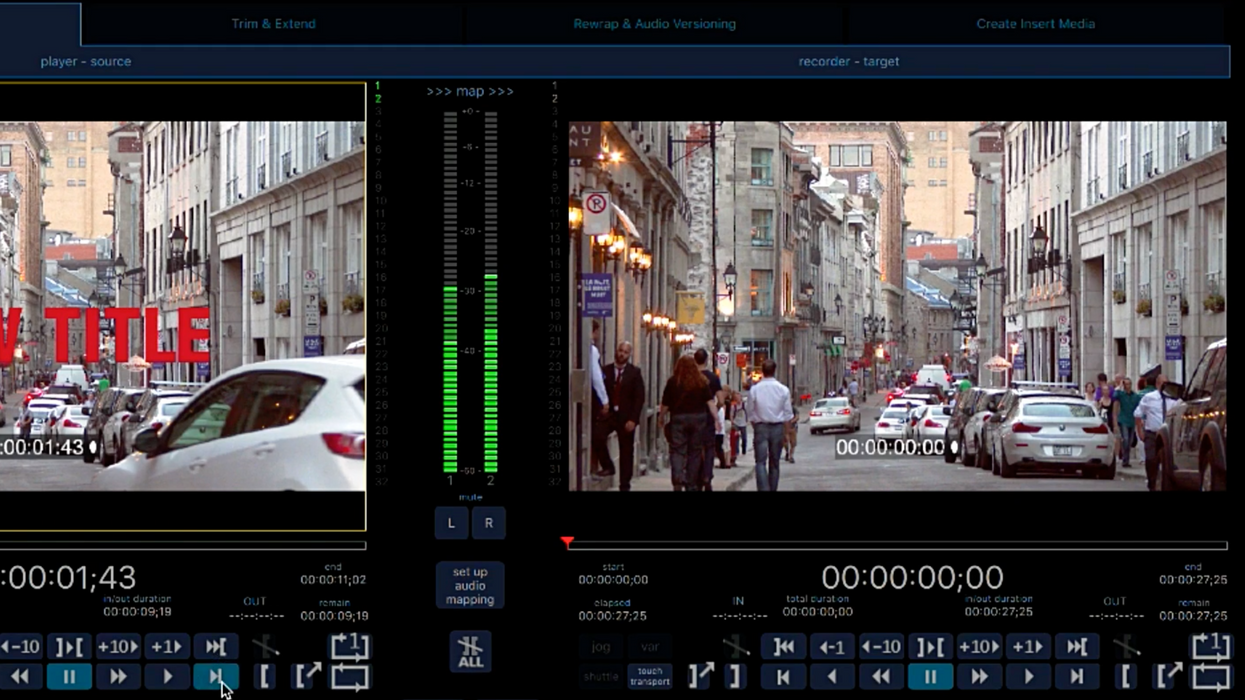cineXinsert Can Save Your Delivery With One Simple Tool
cineXinsert does only one thing: inserts footage into an already completed Quicktime file. But if you need to do that, there's no faster way.

If you are working on a long project on a tight deadline, clicking "File-Export" is always a bit nerve-wracking, no matter how many times you've watched through your timeline. Depending on your source material, you could potentially be looking at several hours to render out your final project, which will have to be entirely re-done if there is an error. Maybe the error is the computer's, maybe it's yours, but you'll have to redo the whole export to fix it either way.
Considering how painful it can be to render out an entire feature again (or again and again and again and again), it's a tremendous tool.
This is the problem addressed by cineXinsert from Cinedeck. Inserting footage into an already completed Quicktime file is the only thing it does, but considering how painful it can be to render out an entire feature again (or again and again and again and again), it's a tremendous tool. Let's say, after your first export, you go to QC the film, watching it through for any errors, and it's perfect—until there is a mistake in the final end credit. You fix the issue on Endcrawl, get a new .mov of the end titles, and, normally, you would bring that back into your NLE and re-export the whole project. If you wanted to speed the process up a bit, you'd make a fresh timeline with the QCed export and the new end credits, but that still requires a whole new master render.
With cineXinset, you simply cue up the new credits in the "player," put the file you watched for QC that needs the new credits in the "recorder," set in and out points in the clip for a 3 point edit, and insert.
That's it.

The time this will save you from sitting and staring at a render bar could be immense. The one possible drawback? Its pricing isn't low; for a single function tool, it runs nearly $1500. That being said, for a busy post house delivering a lot of long form content, the price tag is easily worth it. For an individual editor doing a single feature a year, probably less so. But don't forget, even for that single editor, this tool has the potential to speed up a variety of workflows.
For example, I regularly deliver six different versions of the same project, even on domestic-only projects. If your delivery requirements include multiple different formats, with different slates attached to the same project, you could use cineXinsert to change out each slate (after using another tool to duplicate the source video master file). Let's say you need to deliver two ProRes files of the feature you are working on, one at 5.1 and one in stereo. Instead of rendering both versions out of your NLE as you might now, you instead use cineXtools to change the slate and audio channels on the stereo version, after making the 5.1 in your NLE. As delivery requirements and versioning get more complicated, this could be a very useful tool.
cineXinsert is currently available for a free demo or purchase for $1495 from the cineXtools site.
Tech Specs:
- Mac OS 10.9 or above
- Apple ProRes, Avid DNxHD, AVC-Intra, XDCAM-HD, JPEG 2000 codecs support
- MOV, MXF OpAtom or MXF Op1a wrappers
- 4k, HD, or SD files
- 32 audio channels supported











